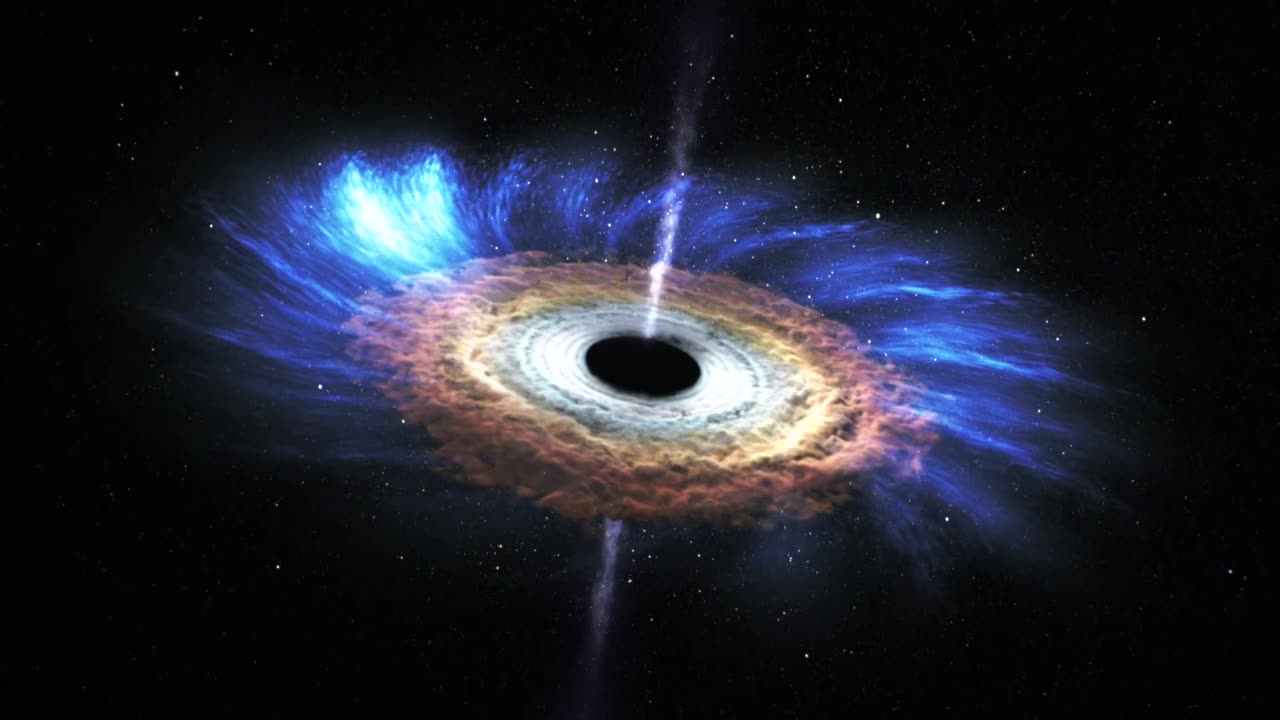Premium Only Content

NASA | Massive Black Hole Shreds Passing Star
A black hole is a fascinating and enigmatic celestial object that forms when a massive star collapses under the force of its own gravity. It is characterized by an incredibly dense mass concentrated into a relatively small volume, leading to a gravitational field so strong that nothing, not even light, can escape from its vicinity.
The gravitational pull of a black hole is so intense due to the concentration of mass in a small region, known as the singularity. The singularity is surrounded by an event horizon, which represents the boundary beyond which anything entering will be trapped forever. Once an object, such as a star or gas cloud, crosses the event horizon, it is said to have crossed the "point of no return."
Black holes come in different sizes, with supermassive black holes being millions or billions of times more massive than our sun and residing at the centers of galaxies. On the other end of the spectrum, stellar-mass black holes form from the remnants of massive stars and are typically several times the mass of our sun.
Despite their mysterious nature, black holes have a significant influence on the surrounding space and time. They distort spacetime, causing gravitational waves and affecting the motion of nearby objects. As matter gets closer to a black hole, it undergoes extreme compression and heating, emitting intense radiation. This radiation can be observed, providing scientists with clues about the existence and properties of black holes.
Black holes have been the subject of intense scientific study and have made significant contributions to our understanding of astrophysics, general relativity, and the evolution of galaxies. They continue to captivate our imaginations and push the boundaries of our knowledge of the universe
-
 1:57:31
1:57:31
2 MIKES LIVE
14 hours ago2 MIKES LIVE #170 with special guest Rep. Buddy Carter (R-GA)
56.6K3 -
 1:02:58
1:02:58
Flyover Conservatives
1 day agoA Doctors Response to Trump’s First Moves: W.H.O. and FDA - Dr. Troy Spurrill; A REAL-LIFE Approach to Health and Wellness Transformation - Kellie Kuecha Moitt | FOC Show
86.9K6 -
 41:50
41:50
State of the Second Podcast
9 hours agoWhat do Gold and Guns have in common?
40.1K4 -
 1:01:26
1:01:26
PMG
6 hours ago $2.68 earnedLibs In FULL PANIC Since Trump Took Office! Creating a Faith to Fit their Agenda
28.9K9 -
 7:09:22
7:09:22
Dr Disrespect
14 hours ago🔴LIVE - DR DISRESPECT - TRIPLE THREAT CHALLENGE - EXTREME EDITION
258K32 -
 55:00
55:00
LFA TV
14 hours agoThe End of the January 6 Hoax | TRUMPET DAILY 1.22.25 7pm
48.6K12 -
 1:13:37
1:13:37
Battleground with Sean Parnell
12 hours agoPresident Trump Is On FIRE w/ Savage Rich Baris
187K27 -
 1:59:59
1:59:59
Melonie Mac
8 hours agoGo Boom Live Ep 34!
79.4K14 -
 49:27
49:27
Sarah Westall
7 hours agoTrillion Dollar 5G Lawsuit, Project Archimedes, Mind Control & DEW Weapons w/Attorney Todd Callender
80K38 -
 53:11
53:11
Standpoint with Gabe Groisman
1 day agoTrump Is Crucial For Hostage Agreement Says Israeli Colonel
56.6K5